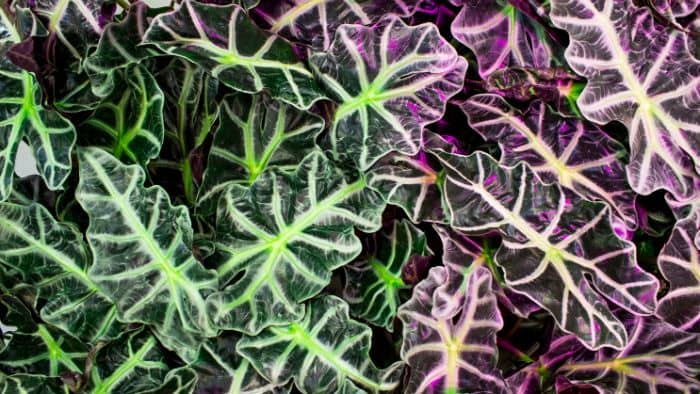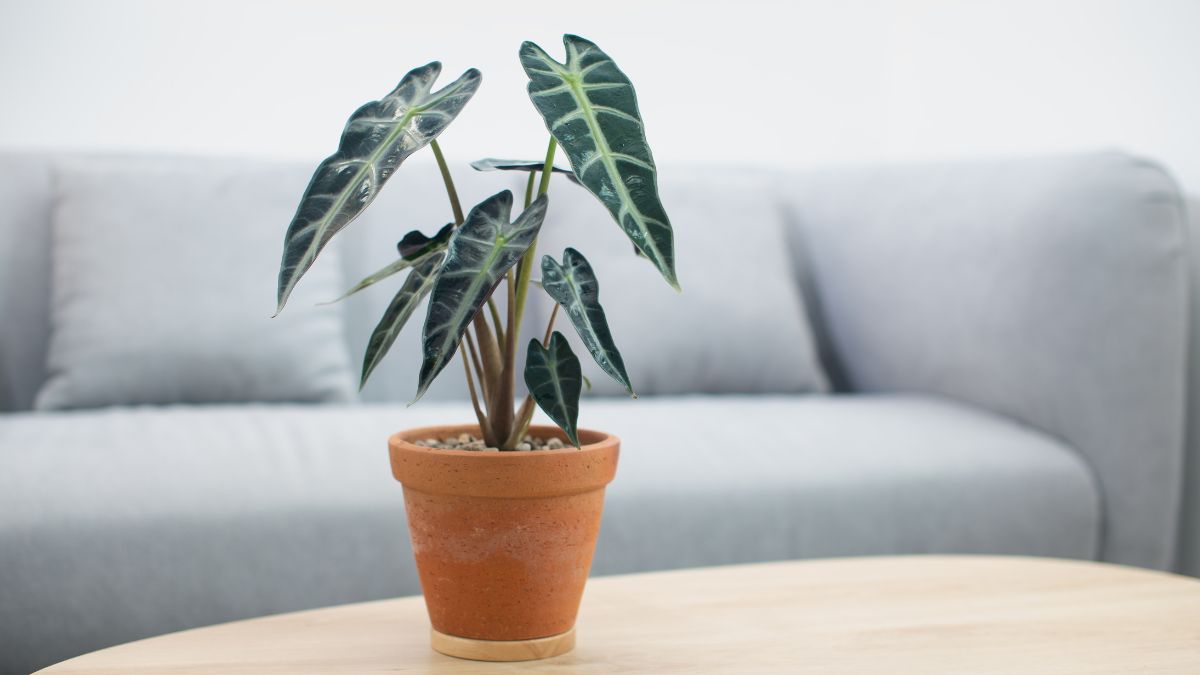If you are interested in finding the Best Soil Mix for Alocasia, then this blog is a must-read. Alocasia is a beautiful plant with big bright green leaves that are also known as the elephant ear plant. This is because the shape and size of its leave mimic that of an elephant.
Aside from the best soil mix, this plant has other specific needs to thrive. They prefer a certain degree of warm and damp conditions which aids in maintaining soil moisture and enhancing growth. The correct maintenance for alocasia is essential to keep them lush because negligence can cause them to wilt.
Alocasia is native to the tropics of Asia and Eastern Australia, but it is also grown in many other places around the world. However, the plant needs special care in harsh winters, therefore it is best grown in warmer parts of the world. In this blog, we will discuss the best soil mix for Alocasia, how to plant it, and more.
What To Consider When Planting Alocasia
There are a few things to consider when planting Alocasia if you want your plant to grow its best. These plants thrive in humid conditions; so, before growing them the first thing to look at is your surroundings. Even if you choose to grow the plant in pots in an indoor environment, keep in mind that it still needs ample sunlight all year long.

However, direct sunlight is not recommended as this can cause the plant leaves to burn, resulting in brown and unattractive foliage. Also, this plant needs to be watered at least once a week, with just enough water to remain damp at all times, but not waterlogged. Its leaves grow in the direction of the sunlight and should therefore be rotated regularly.
If you have pets or toddlers, you should also take caution when growing alocasia in your household as the leaves are toxic when ingested. These plants are heavy feeders and need to be fertilized at least twice a month, especially during warmer months. Additionally, using the best soil mix for alocasia will afford you eye-catching plants.
What is The Best Soil Mix For Alocasia
When looking at soil mixes, there are several factors to take into consideration. These include the soil type in the ground, your climate throughout the year, and what environmental conditions will keep your plants happy and healthy.
We have found that the best soil mix for alocasia is slightly acidic soil. Although soil premixes are commercially available, to ensure your plant’s optimum growth and to give you peace of mind for stress-free planting it’s best to make your soil mix.
There are many DIY soil mix recipes available online as well as premixes that you can easily find at local nurseries and garden centers. However, the best and most recommended mix for alocasia plants includes six parts topsoil, two parts compost, and two parts peat moss.
Mix well to create a medium that provides good drainage, while retaining moisture which is perfect for planting Alocasia. Watch the next video for more info on alocasia soil mixes.
How To Plant Alocasia In Pots?
Alocasia has huge leaves which make them very attractive. When they are kept indoors in a pot, they make great conversational pieces for guests. Below you will find the steps needed to plant alocasia in pots, as well as how to maintain your plant all year long. Keep in mind that using the best soil mix for alocasia is highly recommended to help them grow their best.
Steps:
- Safety first! Always use gardening gloves when handling the alocasia plant. This is to prevent skin rashes and other skin sensitivities if you do find that you are allergic.
- When choosing a pot, the bigger the better, as this gives the plant ample space to grow. A pot that is about 45cm wide and 40cm deep is sufficient.
- Fill up 3/4 of the pot with your soil mix.
- Add a layer of compost on top of the soil mix, leaving about an inch from the top of the pot.
- Make a hole in the soil, about 20cm deep, and place your alocasia seed or plant in the hole.
- Cover the seed or plant with soil and lightly pat down. Don’t plant more than one seed or root per pot as alocasia is a large plant that requires ample space to grow. The bigger the pot the healthier the Alocasia plant will grow.
- Place the plant in an indoor area with sufficient sunlight, but not direct sunlight.
- Water the plant once a week so the soil stays wet, but be careful not to drown the plant by overwatering it.
- Add fertilizer at least once a month to ensure the plant gets enough nutrients.

What Are The Benefits of Plant Fertilizers?
Just as specific soil types are important in maintaining the health of plants, so too are fertilizers. They are used to enhance plant growth and aid in keeping them lush. However, you must note that while some plants crave it, others have the ability to grow well without the addition of fertilizers.
Although using the best soil mix for alocasia plants is important to meet their nutritional needs, you need to keep in mind that they are amongst the ones that thrive with timeous fertilization. Have a look below at a few of the benefits of plant fertilizers to learn more.
Benefits:
1. Fertilizers are like vitamins for plants. They are used to replenish the nutrients that plants have absorbed from the soil.
2. With the right fertilizer, plants can grow bigger, faster, and healthier.
3. There are three types of fertilizers which include chemical, organic, and biofertilizers, each with its own benefits and used for different plants and crops.
2-Pack Large Plastic Planters with Saucer
Conclusion
There are many kinds of soil mixes for planting Alocasia. However, I have found that the best soil mix for Alocasia is the homemade mix mentioned above. It is crucial to ensure that the soil is able to retain moisture, while also providing good drainage to the plant.
The soil mix that we have recommended possesses all of these qualities to ensure that your elephant ear plants flap happily all year through. Also, a happy gardener is one with thriving plants because care and maintenance are of importance.

It is also important to keep in mind that alocasia should be grown with caution around toddlers and pets as it is toxic if ingested. In some rare cases, touching its stems and leaves can cause skin rashes and irritation, so gardening gloves are recommended. Here’s a link with additional alocasia plant care information.
FAQs
[rank_math_rich_snippet id=”s-ea61745a-f1e6-4d56-84a3-5284ea21c5ad”]


